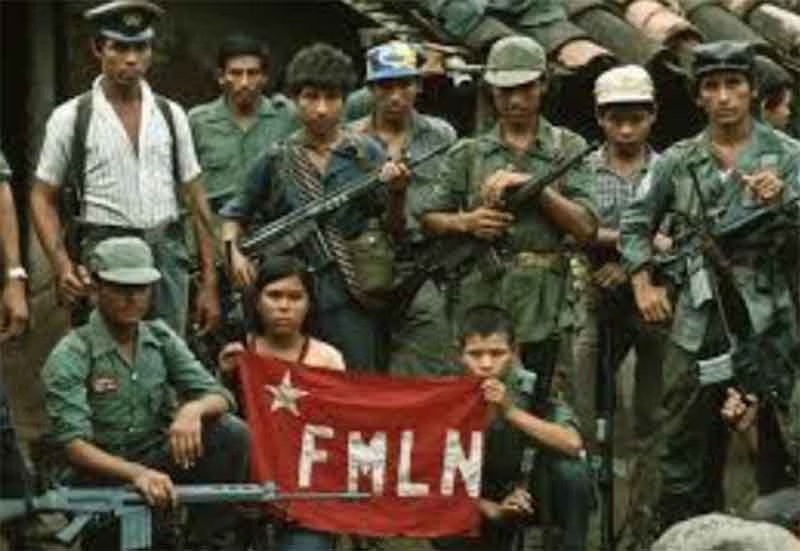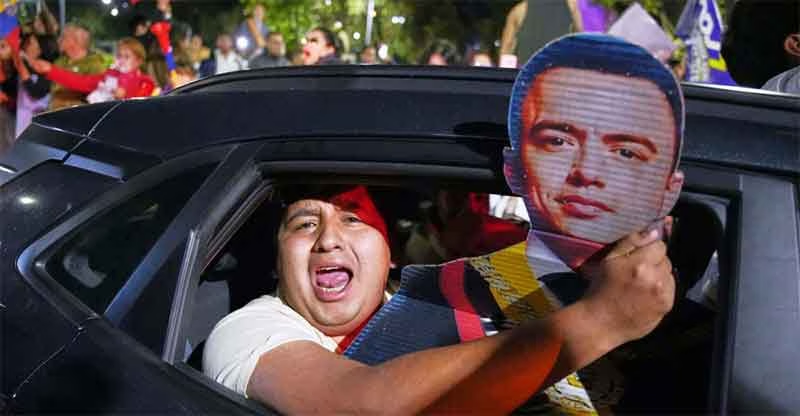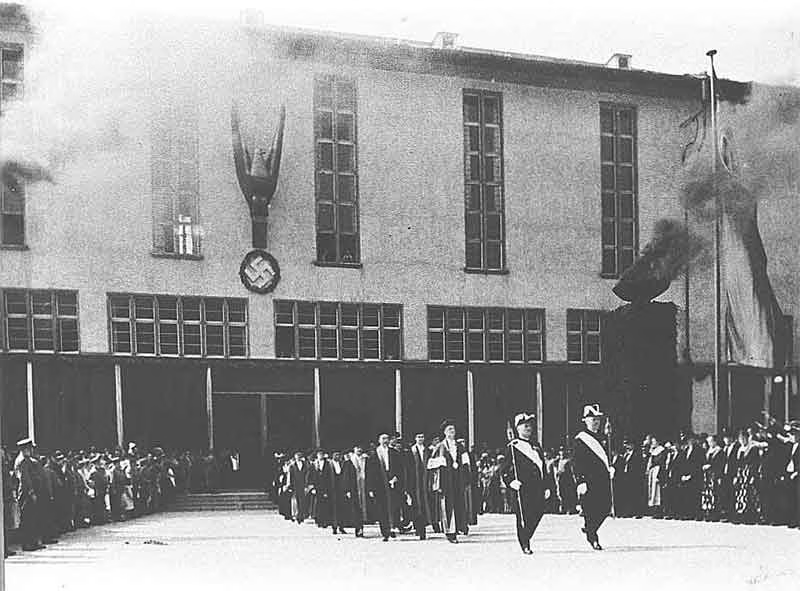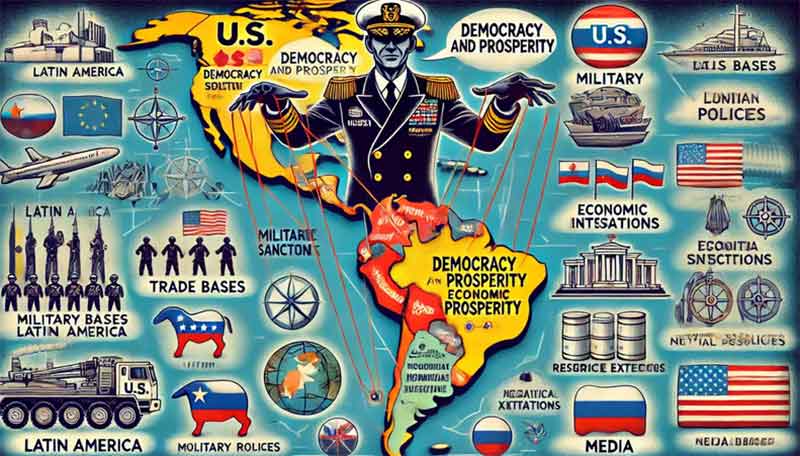
Are you among the millions horrified by the treatment of Kilmar Abrego Garcia? Do you of a certain age recall how inspired thousands were by the struggle of the Faribundo Marti National Liberation Movement (FMLN) against the Salvadoran oligarchy in the 1980s? Do you remember the martyrdom of Archbishop Romero, who braved the government and the conservatives in his own church to support the poor? And yet, despite the long war waged by the FMLN, El Salvador has slowly devolved into one of the worst imaginable dictatorships, as much of the population lives in poverty and infamous prisons house thousands of Salvadorans and immigrants deported by Trump.
This trajectory is not only tragic for Salvadoran workers, but is similar to the fate of many other wars for national liberation from oppression, both internal and external. Despite the valor and sacrifices of many fighters, one more struggle aimed only at authoritarianism and colonialism, but not at capitalism and imperialism, has failed to elevate workers in the long run. Even today, many activists in the US support and seek inspiration from any and all forces that oppose the US and autocracy without critiquing their analyses and goals. In fact, many activists think it is unacceptable and disrespectful to question the goals or practices of any resistance movement. We would argue that it is time to learn from a long history of failures to win workers’ power – from South Africa to Algeria to El Salvador and many more – and build an international class conscious movement against capitalism itself.
The Story of Salvadoran Oppression and Resistance
In 1821, El Salvador and five other Central American provinces declared their independence from Spain and formed a Federation recognized by the US three years later. Ten years after the Federation dissolved, El Salvador was acknowledged as an independent nation by the US; by 1863 there were full diplomatic relations.
As in all capitalist nations, there was a wide gulf between rich and poor in El Salvador. According to the US military in 1932, 90% of the wealth was in the hands of less than one percent of the population, 30-40 families. The basis of the local inequality was the coffee industry. The fertile land west of San Salvador had been inhabited by the indigenous population, who held land in common. But from 1882-1912, the land was redistributed to private owners primarily of European heritage. By 1920, 70% of the workers had been displaced from their land and communities and had become day laborers on the coffee plantations, earning pennies a day. This enterprise was in large part sponsored by Hills Brothers Coffee of San Francisco and became that city’s largest industry in the 1920s. The coffee export business and the national economy were severely affected by the financial crisis of the 1930s. leading to a military coup in 1931 against a government which had promised some reforms.
The Communist Party was born in 1925, but the most popular leftist party was local International Red Aid, led by Augustin Farabundo Marti, and both groups organized urban laborers as well as landless plantation workers. A large national uprising began in January, 1932, but the urban revolt lasted less than a day, and within three days the whole country was under martial law. The three national leaders, including Marti, were quickly arrested and soon executed. Rebellions continued in the countryside, where indigenous workers attacked army barracks, although the death toll was apparently no more than thirty.
Nonethless, the government response was massive and brutal. Thousands of peasants were slaughtered, with estimates from 10,000 to 30,000 or more. It is known as La Matanza or The Massacre.1,1a
For the next 30 years, all vestiges of indigenous culture, from music to clothes, were banned, as one military dictator followed another. Race laws passed in 1933 led to Afro-Salvadorans, the descendants of slaves, being expelled. Even though the 1960s saw increased industrialization, workers saw no improvements in their quality of life. By the 1970s, there were movements for social justice that were brutally suppressed by the military and death squads funded by the oligarchs. Elections were blatantly manipulated. The ruling junta in 1980 was killing 1000 people each month. Archbishop Oscar Romero, who had regularly accused the government of committing violence and supported the right to wage insurrection, was assassinated by a death squad in an event that shocked the world. After thousands more activists and civilians were murdered by government forces, four (later five) leftist guerilla groups united to form the FMLN.2,3
The FMLN was backed by Moscow, Cuba and Nicaragua, and thus the US supported the military government, fearing another leftwing victory in its backyard and even the spread of revolt to Mexico. President Carter briefly suspended aid to El Salvador after four American nuns were raped and murdered by death squads in 1980, but soon restarted it, and Ronald Reagan increased the aid package to over $1 million a day, the 3rd largest pot of US foreign aid. The US supported the more moderate governing faction under President Duarte, while right wingers created the extreme ARENA party headed by Roberto D’Aubuisson, the killer of Oscar Romero. When the FMLN began its concentrated attack on the government in January, 1981, the US began supplying advisors and trained the most brutal forces, many at the School of the Americas, including those who committed an infamous massacre of about a thousand civilians in the town of El Mozote.
During the 1980s, at least 75,000 civilians were killed out of a population of five million and thousands of children separated from their families, many kidnapped by the military and an estimated 2300 sent to the US and Europe for adoption.3a By 1992, neither side had attained a clear victory, and the parties agreed to negotiate a peace accord under the auspices of the United Nations. The FMLN agreed to become an electoral political party and compete with the far right ARENA party, which can only be understood by examining the composition of the five- member coalition. Only the Communist Party was actually Marxist, and in 1980 the FMLN additionally allied with the openly electoral parties of the Revolutionary Democratic Front (FDR). This more moderate grouping was supported by Mexico, France, Spain, Sweden and Venezuela. Although the accords did accomplish some demilitarization, a Truth Commission determined that 85% of violent acts had been committed by government forces, but the FMLN agreed to a blanket amnesty. The FMLN did little to dispute the power of business owners or land-owning elites, ie capitalism.4,5,6
The result of the return to electoral politics was 20 years of rule by ARENA, who won elections by excluding huge numbers of voters before and on election days and intimidating or killing its opponents. Financed by the oligarchs, they promoted policies of austerity, privatization and deregulation and promoted the consolidation of a low-wage export economy. The resulting poverty and community disintegration helped fuel the development of gangs. ARENA even sent soldiers to fight with the US in Iraq.
Meanwhile the FMLN was fractured into groups that wanted various levels of struggle for reforms and others who wholly supported private enterprise. It wasn’t until 2009 that an FMLN candidate, moderate Mauricio Funes, won the presidency by a narrow margin. Even as he promised some benefits to the poor, Funes supported the US-sponsored Central American Free Trade Agreement (CAFTA), pledged to respect private property, current tax laws, and retain the dollar as national currency. He was followed by Salvador Sánchez Cerén, a former guerilla leader, but one who also maintained his faith in capitalism and allegiance to the US. Their failure to bring any significant change to the lives of most Salvadorans and an anti-gang policy that mimicked that of ARENA led to a fall in the FMLN vote to 14% by 2019.7
The gang problem in El Salvador has many origins. The long history of militaristic repression, social disintegration, and lack of job opportunities are certainly important. In addition, President Clinton began deporting thousands of Salvadorans, who had formed gangs while in the US as a response to racism and unemployment. Moreover, the Salvadoran military and the police were totally corrupt and encouraged rather than controlled violence. For two years, in 2012, the FMLN government attempted to broker a truce between gangs and introduce police and employment reforms, but they did not have the resources to continue it and themselves relapsed back to heavy oppression.8
The current autocratic Salvadoran President, Nayib Bukele, first won election as Mayor of Nuevo Cuscatlán and then of San Salvador in 2015 as a member of FMLN, which he soon left. He is one of many children of Armando Bukele Kattán, an entrepreneur and founding leader of the country’s Muslim community. Nayib was elected President in 2019, and three of Nayib’s brothers serve as his top policy advisors.8a From its inception, his rule has promoted private interests and those of the US, and there are many shocking tales of corruption. In 2021, Bukele disposed of all constraints on his power by firing all five justices of the constitutional chamber of the supreme court and the attorney general. The next year the security forces were given the right to detain any citizen with impunity, which resulted in 85,500 detentions since March, 2022 and the world’s highest incarceration rate. Most detainees never have a trial, their whereabouts are often secret and nearly 400 are known to have died.
Although Bukele’s popularity at home and with the US is based on his supposed lessening of gang violence, his actual collusion with the largest gang, MS-13, has recently come to light. Bukele actually offered them shorter and easier prison sentences, protection from extradition and control of territory in exchange for a decrease in public murders and support for his party in elections. In actuality, the gangs just took more care to bury their victims. Activists, journalists and independent activists have been imprisoned or forced to flee. Thus it is no surprise that Bukele accepted $6 million to take deportees into his vast notorious prison CECOT. One of his demands was that the deportees include MS-13 members who had agreed to testify in the US about Bukele’s deals with the gang. Meanwhile, according to the World Bank, 28.4% of Salvadorans live in poverty, and 40% are extremely vulnerable with incomes under $14 per day.9,10,11
US Interests in El Salvador
Once the civil war ended, US capitalism continued to play a huge role in governance in El Salvador. US business was the biggest source of foreign investment and the main trading partner As of 2022, there was $7.9 billion in trade between the two countries, with apparel and accessories accounting for 61% of US imports. The US also maintains an air base which is used for regional surveillance of drug and military activity.
Under Obama, El Salvador was invited into a “Partnership for Growth” with the US, and in 2014 the US gave $277 million for education, infrastructure and other services. In return, the Salvadorans had to open all of their economic sectors to private investment and maintain labor laws favorable to owners. Nonetheless, the country had the lowest growth rate in Central America. Two million Salvadorans also fled to the US, and their remittances accounted for 19% of the Salvadoran GDP by the early 2000s. The US also threatened to deport many of them should the FMLN came back into power.
In 2018 , under the FMLN, El Salvador recognized China, and received tons of rice and $15 million for infrastructure projects. Bukele also visited China and received $500 million for development projects and a sports stadium. China also has an interest in a port on the eastern coast which would also provide access to Honduras and Guatemala and in helping develop a 5G technology industry, which the US worries could be used for spying. So although El Salvador is not part of the Chinese Belt and Road initiative as of yet, it is clearly in China’s focus in order to challenge US hegemony in the region.12,13,14
Conclusion
In the end, we see that El Salvador is but one more pawn in the imperialist game, primarily in the US camp for the moment. It not only serves as a source of cheap labor and imports, but as a military outpost and a convenient center for fascist enterprises like imprisonment of immigrants without due process. The US involvement was initially spurred by the desire to quell leftist rebellion in the region. The lack of sizable opposition among Salvadorans today is in large part due to the absence of an anti-capitalist movement (at least one we know about) that unites urban and rural workers within and without the country, the same problem that prevented victory in the 1980s. If we wish to topple fascism and imperialism in El Salvador, in the US, in any region of the world, we must learn the lessons of the past. It is incumbent upon us to organize against capitalism, not for a “better” capitalism, and to criticize ourselves and assist one another as comrades. Whether as workers in imperialist or colonized nations, the global north or south, we need unity and clarity in a struggle for a better world, a world run by workers, for workers.
Subscribe to Our Newsletter
Get the latest CounterCurrents updates delivered straight to your inbox.
Ellen Isaacs is a retired physician, anti-capitalist and anti-racist activist and co-editor of multiracialunity.org. She can be reached at [email protected]
1.https://www.jstor.org/stable/30023895
1a. https://www.calmigration.org/learn-chapter/salvador-history
2.https://www.teachingcentralamerica.org/history-of-el-salvador
3a. https://phr.org/countries/el-salvador/
4.https://cja.org/where-we-work/el-salvador/
5. https://www.c-r.org/accord/engaging-armed-groups/salvadorean-insurgency-why-choose-peace
6. https://againstthecurrent.org/atc053/p2964/
7. https://www.marxists.org/history/etol/newspape/atc/2151.html
8a. https://elfaro.net/en/202006/el_salvador/24542/The-Bukele-Clan-that-Rules-with-Nayib.html
9. https://www.theguardian.com/commentisfree/2025/may/29/trump-el-salvador-nayib-bukele
11. https://blogs.worldbank.org/en/latinamerica/boosting-poverty-eradication-el-salvador
12. https://www.csis.org/analysis/china-and-el-salvador-update















































